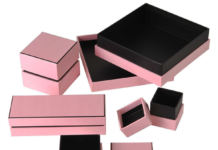Portable Bluetooth speakers are extremely popular these days for listening to music on the go. Their compact size and wireless connectivity make them easy to take anywhere. But when it comes to volume, how loud can these little speakers actually play your music?
What Determines a Bluetooth Speaker’s Volume
There are several factors that impact how loud a Bluetooth speaker can get. The most important elements are the speaker’s drivers, amplifiers, and battery.
The drivers are the components that physically move to create sound waves. Larger drivers with greater surface area can displace more air, producing louder volumes. Most portable Bluetooth speakers have 1-3 small drivers sized 1-3 inches. Their compact size allows for portability but limits maximum loudness.
Amplifiers boost the audio signal to drive the speakers to louder volumes. More powerful amplifiers allow for louder maximum volumes, but also draw more current which drains the battery faster. Most Bluetooth speakers have amplifiers sized 10-40 watts.
The battery supplies power to energize the amplifiers. Lower powered batteries constrain a speaker’s loudness, even if it has strong amplifiers, since peak volumes require ample wattage. Rechargeable lithium-ion batteries are commonly used which store modest power due to size and weight constraints.
Speaker Size and Maximum Volume
Smaller Bluetooth speakers designed for mobility and convenience typically can’t get too thunderous. Single-driver models that fit in your pocket often max out at around 80-85 decibels (dB), equivalent to a ringing telephone.
Medium sized units still portable enough for backpacks bump up max volumes closer to 90dB, or about as loud as a lawn mower. Once you reach multi-driver speakers sized as large books or printer paper boxes, the loudest volumes before distortion reaches 95-100dB – as loud as a motorcycle or construction tools.
Big home Bluetooth speakers may integrate side or upward firing drivers and large batteries to provide earth-shaking 120+ dB sound that matches full-size stereo systems. However at this point the speakers lose mobility as a tradeoff.
Volume vs Sound Quality
One important note is that a Bluetooth speaker’s maximum volume does not mean the music still sounds good at those levels. As portable speakers approach peak loudness, the audio signal is more likely to distort and sound bad. So playing at full volume may provide loud but poor sound quality.
Lowering volume levels on a quality speaker provides cleaner playback. A good speaker plays crisp and full at 80dB for example, versus a poorer one straining at max volume. So louder doesn’t necessarily mean better when evaluating portable Bluetooth speakers.
Factors that Reduce Maximum Volume
Keep in mind several other factors can also reduce a Bluetooth speaker’s max loudness during real world usage:
Playing complex music content with intensive bass drains more battery requiring volume to be lowered
Streaming music over Bluetooth draws more power than playing content stored directly on device
Battery life diminishes over time after repeated recharges, reducing peak volume
Dirty or worn speaker components degrade audio signal and quality
Depending on conditions, actual loudness may drop 10-15% compared to manufacturer specifications.
Is Louder Always Better?
While having loud volume capacity on a portable speaker is important, most consumers don’t actually play music constantly at full blast. Lower to moderate volumes are more common for background listening.
Extreme loudness also comes with downsides – fast battery drain, potential hearing damage with long exposure, and disturbances to others around you. For most usage occasions like patio background music or powering a small gathering, moderate volumes in the 80-90dB range work perfectly fine.
In the end, balance is ideal – having a portable speaker than can pump up loud enough for emphasized playback, but optimized for cleaner audio fidelity at healthy everyday volumes. Achieving this balance requires choosing the right speaker components and technical design matched to your habits and needs.











